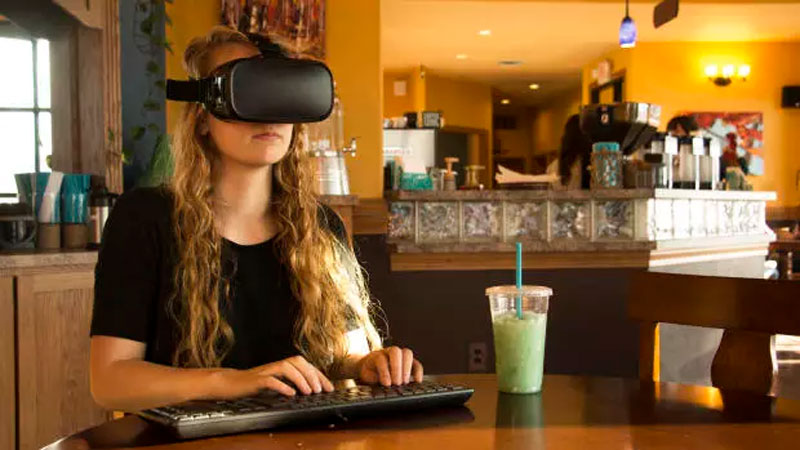 NEWS
NEWS
 NEWS
NEWS
 NEWS
NEWS
An Indigogo campaign called “The Marvel by Finman” claims to be the first attempt to make a virtual reality (VR) operating system (OS). While there have been VR marketplaces and platforms for the current VR devices released–such as the Gear VR marketplace (from Samsung Electronics Co. Ltd.), SteamVR (from Valve Corporation) and Zeality (Zeality, Inc.) —this would be the first apparent desktop creating app for mobile VR.
The inventor, and organizer of the Indigogo campaign, Erik Finman, made his first $100K by investing in Bitcoin at age 15. He then went on to start Botangle, an equal opportunity video tutoring service for students. Now he has turned his attention towards virtual reality and assembled a team of PhD graduates from Stanford to develop The Marvel.
The Marvel touts itself as an OS, but it is sold with a rig that acts as a VR headset (similar in look to the Gear VR goggles and strap). The software is compatible with Android devices, but the device must be running Android 5.0 (Lollipop) or above.
Features of The Marvel’s app include on-demand, resizable interface elements for easy reading of text, a curved user interface allowing natural movement within the field of vision and it runs windowed Android apps. As for user interface, the software and device is compatible with a Bluetooth mouse and keyboard.
The headset hardware includes a 3-axis accelerometer, gyroscope and a near-field communications (NFC) chip. It is compatible with phones and mobile devices from 3.5 inch to 6 inch sizes but a device over 5 inches is suggested for best experience. As for optics, a PMMA lens (acrylic glass also known as Plexiglas) provides a 180 degree, stereoscopic view.
The biggest benefit: A user can set up in an empty space with wireless mouse/keyboard and just work. No need for a laptop, or even that much desktop space to set up. The benefit of VR means that the user has their entire field of view to work with as monitor space—and, even better, there is no distracting café or cubicles to look at.
Another benefit of a VR workspace is that the user can place themselves anywhere visually—an airy iced mountaintop, a tropical beach with white sands and sapphire surf, perhaps even underwater surrounded by soft coral and schools of shimmering fish or an alien world with only the cold light of the stars and a single ringed moon for company.
The campaign has 21 days left and features a flexible goal of $500,000 with approximately 1 percent of the goal met so far. The headset rig and the software is set to ship in December 2016, just in time for the holiday season. Contributors to the Indigogo campaign who donate $99 USD will receive The Marvel and the software when it ships. Notably, this is the same price as Samsung’s Gear VR headset.
Full details are available about The Marvel on the Indigogo campaign website.
With virtual reality, it is possible to place yourself anywhere, and get as many screens as you like. Image credit Indigogo campaign
While The Marvel claims to be developing the first virtual reality OS for mobile, it seems more like what it’s doing is providing a VR desktop environment, which is already being done by a few other apps that PC VR-using readers might want to check out.
For example, on PC, check out Virtual Desktop 1.0 and BigScreen (in beta) on SteamVR for the HTC Vive and Oculus Rift. Both of these apps provide a VR desktop environment that PC users can use to place windows in a virtual space with 360 degree vision, providing a gigantic amount of screen real estate to work with.
The biggest difference is that The Marvel is for mobile devices (Android) and works to change a mobile space into a VR workspace in a similar fashion to the apps above. It is also a VR headset that provides everything that’s needed for the experience and the wireless hardware to support a mouse and keyboard.
These are still the very early days of consumer-level VR technology and while PC-connected VR rigs have a great deal more graphical power, mobile device VR is far cheaper (and more people have smartphones capable of VR). As a result, The Marvel’s headset and VR desktop software for Android is pioneering a powerful mobile use case for VR.
THANK YOU